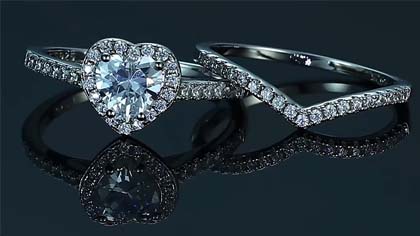Top Luxury Brands Targeted by Counterfeiters

Luxury Brands Struggle Against Counterfeits in the U.S. and China
In China and the United States, Cartier and Tiffany & Co. are among the luxury jewelry brands most loved by consumers, particularly within the Asian population. In both countries, the Cartier Love bracelet is an iconic luxury piece, with hundreds of thousands of knock-offs sold every year. Replica Cartier Love bracelets are widely available on China’s latest e-commerce platforms, with some counterfeits being so similar to the originals that they sell for just one-tenth of the price. The U.S. market also faces a substantial influx of knock-offs, with over 300,000 counterfeit Cartier Love bangles entering the market in 2023 alone.
Tiffany & Co. faces similar challenges. While their classic T series and Key jewelry items are popular, counterfeit versions flood the Chinese market. In 2020, over 3 million counterfeit pieces of Tiffany jewelry were in circulation globally, with nearly half entering China and almost a quarter entering the U.S. This influx of fakes has also impacted the market for customized jewelry, such as customized bracelets with names, as consumers may find it difficult to distinguish between genuine and counterfeit products.
Global Convergence Towards Classic Styles
Certain classic styles of luxury jewelry are particularly favored in the Chinese and American markets, making them prime targets for counterfeiters. For example, Cartier’s Juste un Clou collection remains a popular choice in China and ranks high on many U.S. shopping wishlists. In 2023, more than half of the fake Juste un Clou bracelets were sold in China and the U.S. combined, with over 200,000 imitations estimated to have been purchased worldwide.
Van Cleef & Arpels has similarly experienced a significant increase in counterfeit versions of its four-leaf clover jewelry collection in both countries. This lucky design is especially popular with Chinese consumers, but the number of cheap fakes has surged, cutting into the market for legitimate goods. In the U.S., the situation is no better: sales of imitation four-leaf clover jewelry have increased yearly, with these fakes now accounting for 30% of the market share. The rise of counterfeit products also extends to items like custom gold bangles and customized sterling silver necklaces, which are often targeted due to their personalized nature.
Knockoff Online Sales Surge in the U.S. and China
The rise of e-commerce platforms and social media worldwide has led to skyrocketing online sales of counterfeit jewelry from China and the USA. By 2023, sales of counterfeit jewelry in China are projected to reach over $10 billion, while the U.S. market will hit $5 billion online. Platforms like Douyin, Taobao, and Instagram have become hotbeds for fake jewelry, where consumers are often lured by low prices, only to end up with subpar products. This surge in counterfeit goods also impacts the market for customized jewelry, as consumers may be misled into purchasing fake custom gold bangles, customized sterling silver necklaces, or customized bracelets with names.
Brand Response and the Road Ahead
The flood of counterfeit jewelry in both markets has prompted luxury brands to implement various measures to protect their intellectual property rights. In China, tighter legal efforts and anti-counterfeit measures by companies like Cartier and Tiffany & Co. are in place. These brands are also using social media to educate consumers on how to spot fakes, reducing the chances of inadvertently purchasing counterfeit items.
However, the regulation of the imitation jewelry market still requires time and prolonged efforts. Buyers in the Chinese and American markets must purchase luxury jewelry through formal channels to ensure they receive genuine products. Supporting authentic products will promote the positive development of the luxury market while respecting intellectual property protection for brands. Furthermore, as the market for custom jewelry—such as custom gold bangles, customized sterling silver necklaces, and customized bracelets with names—continues to grow, it’s crucial for consumers to be vigilant and informed, ensuring that the products they buy are genuine and of high quality.